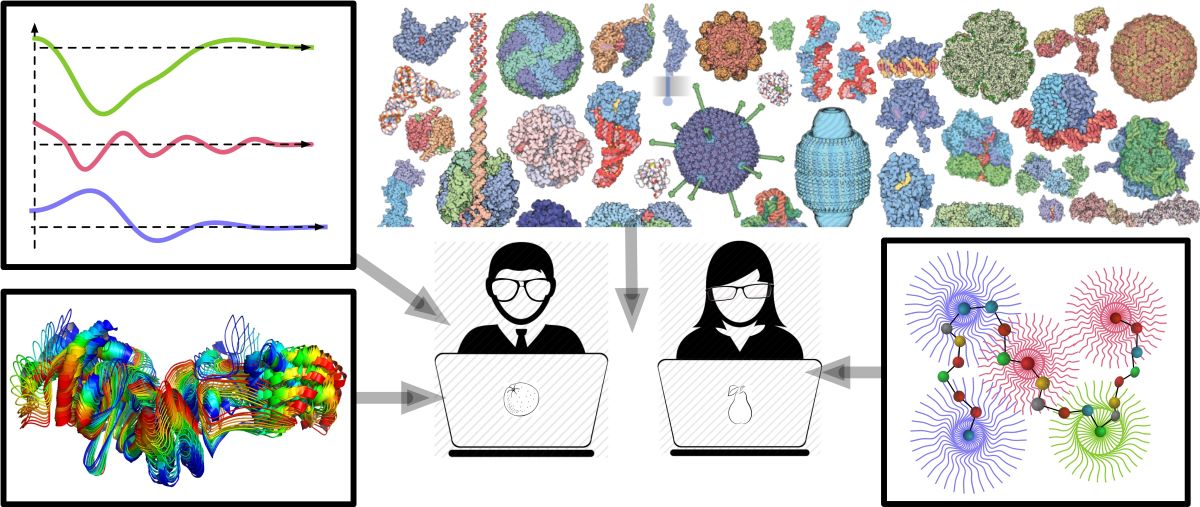Speakers
Description
The HADDOCK team have participated as human and webserver predictor and/or scorer in last CAPRI rounds (47-55), mainly relying on the use of our integrative modelling software HADDOCK[1] which is able to use user-provided information to guide the docking process. An important element of HADDOCK is its scoring function, computed from the weighted sum of 4 energetical terms (VdW, Electrostatics, Desolvation and restraints energies), which, despite its simplicity, is still performing competitively.
Besides HADDOCK, a variety of other tools were used related to all kind of predictions regarding biomolecular complexes, ranging from the prediction of interacting residues (ProABC2[2], ARCTIC-3D[3], CPORT[4]) to clustering methods (FCC[5]) to the molecular dynamics-based scoring of docking models[6]. With this set of tools and methods, we participated to both predictions (except the CASP-CAPRI round) and scoring rounds as both human teams and web server.
For rounds 47 and 49, we mainly relied on HADDOCK2.4, available for the community as web service at https://wenmr.science.uu.nl/haddock2.4/, for both prediction and scoring. More recently, for manual predictions and scoring, a new, modular version of the software, HADDOCK3 (https://github.com/haddocking/haddock3) has been used. This new version enables easy setup of different docking and/or scoring workflows. Using it allowed us to predict at least acceptable models for 50% of the targets (at round 55) and pick more than 50% of medium quality complexes (in rounds 54 and 55) at scoring stages.
At the CAPRI assessment meeting, we will present the various approaches and methodologies used for different rounds, including the data introduced in our protocols to guide the docking.
References
[1] Dominguez C, Boelens R, Bonvin AMJJ. HADDOCK: A Protein−Protein Docking Approach Based on Biochemical or Biophysical Information. J Am Chem Soc. 2003
[2] Ambrosetti F, Olsen TH, Olimpieri PP, et al. proABC-2: PRediction of AntiBody contacts v2 and its application to information-driven docking. Bioinformatics. 2020
[3] Giulini M, Honorato RV, Rivera JL, Bonvin AMJJ. ARCTIC-3D: automatic retrieval and clustering of interfaces in complexes from 3D structural information. Commun Biol. 2024
[4] de Vries SJ, Bonvin AM. CPORT: a consensus interface predictor and its performance in prediction-driven docking with HADDOCK. PLoS One. 2011
[5] Rodrigues JP, Trellet M, Schmitz C, et al. Clustering biomolecular complexes by residue contacts similarity. Proteins. 2012
[6] Jandova Z, Vargiu AV, Bonvin AMJJ. Native or Non-Native Protein-Protein Docking Models? Molecular Dynamics to the Rescue. J Chem Theory Comput. 2021
| Submitting to: | 8th CAPRI assessment meeting |
|---|

